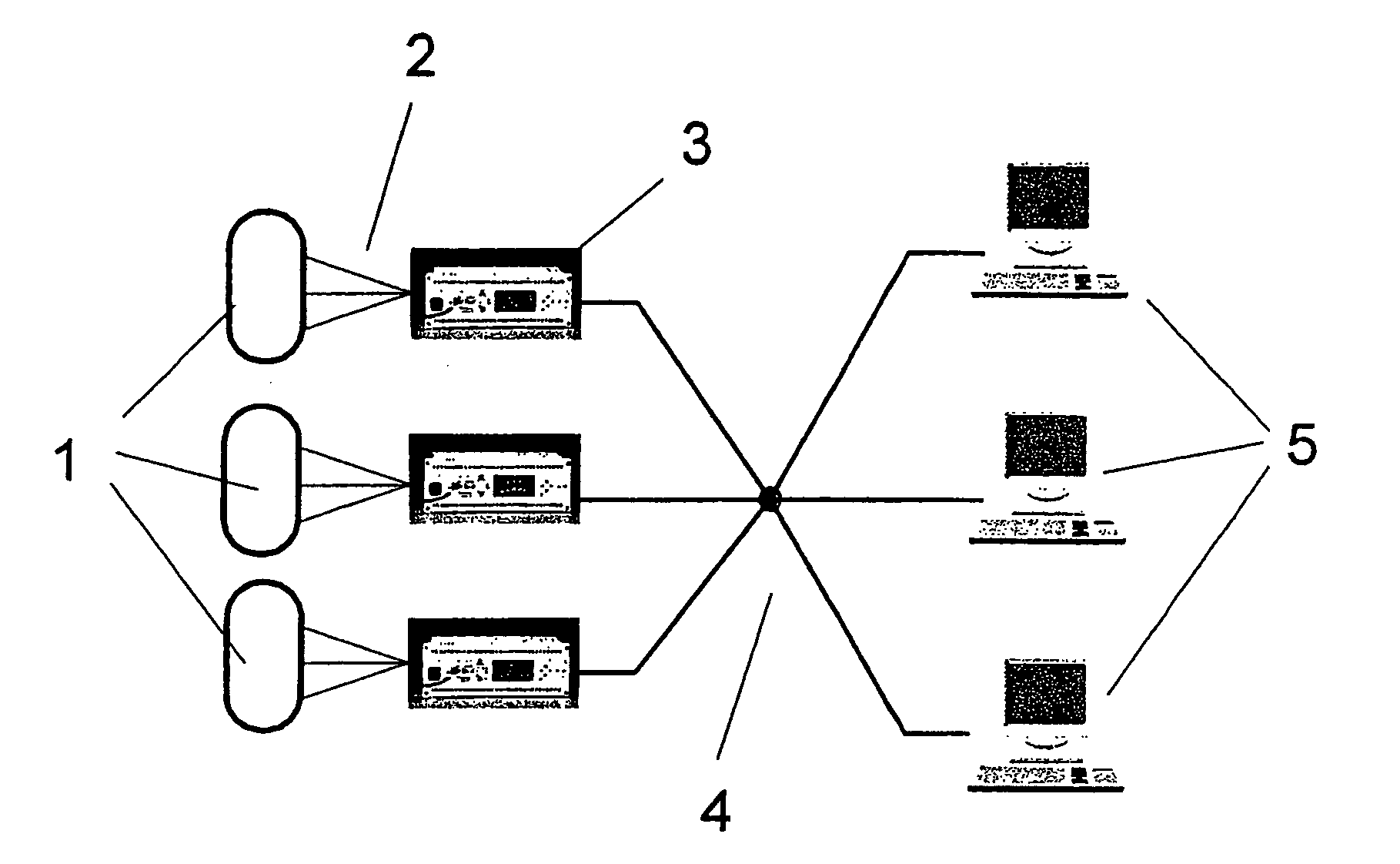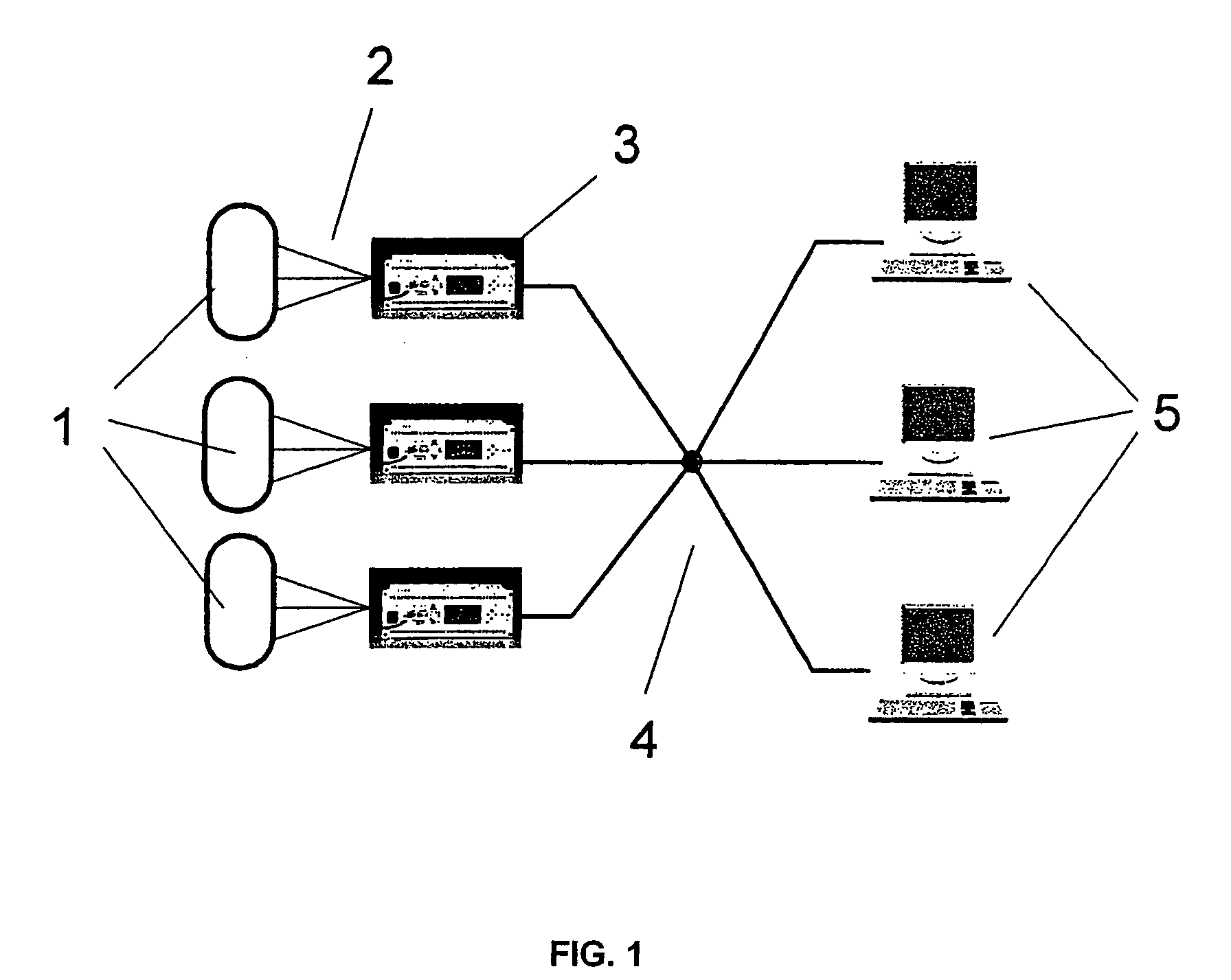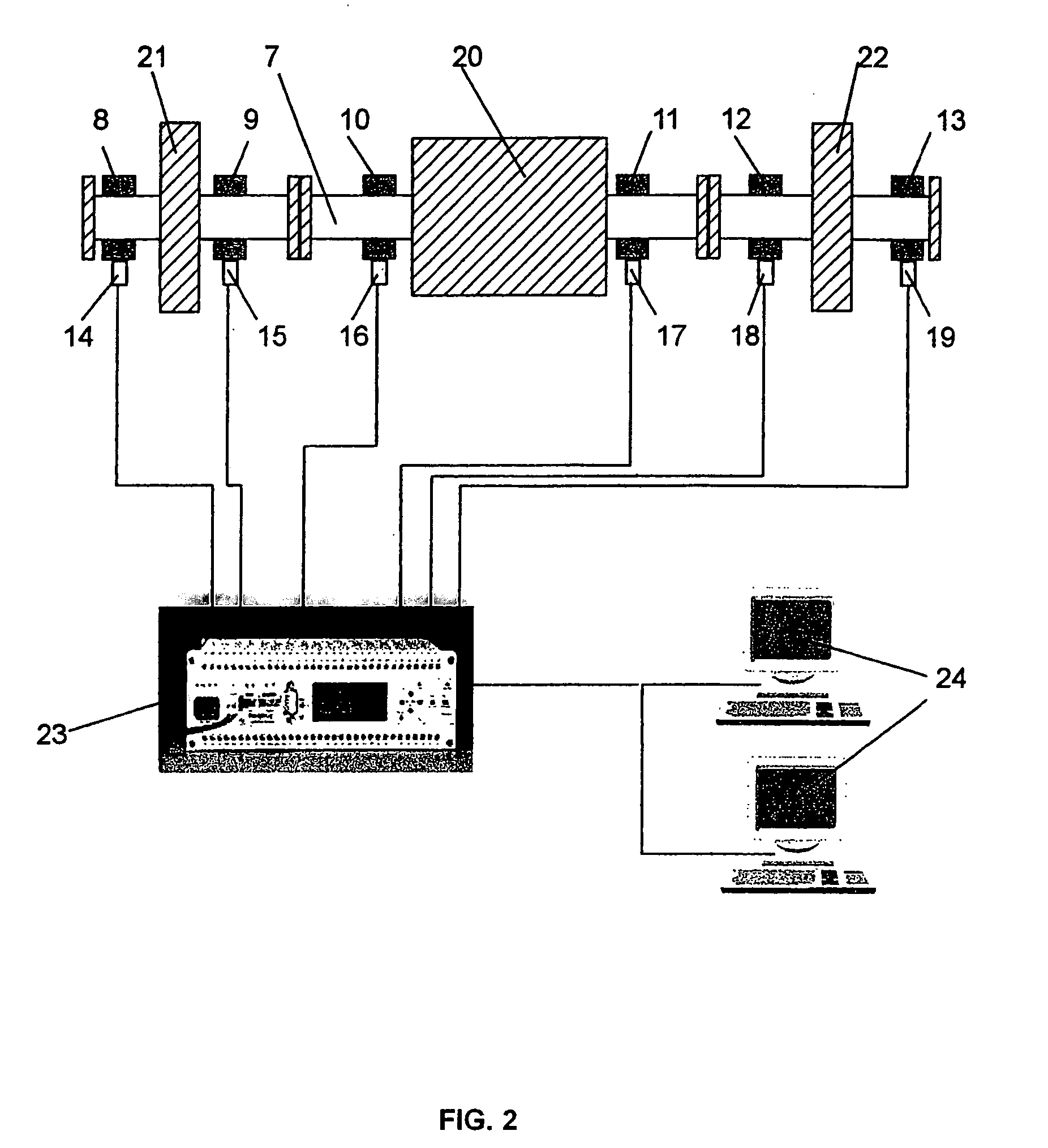Condition monitoring in technical processes
- Summary
- Abstract
- Description
- Claims
- Application Information
AI Technical Summary
Benefits of technology
Problems solved by technology
Method used
Image
Examples
Embodiment Construction
[0036] The reference characters in FIG. 1 have the following meanings: [0037]1 processes that are being monitored; [0038]2 lines serving as connections between the sensors of the processes and measurement units; [0039]3 measurement units as interfaces between the processes and the PCs; [0040]4 a data network serving as data connection between the measurement units and the PCs; and [0041]5 PCs on which the monitoring software is installed.
[0042] The function according to FIG. 1 is next described. Measurement units 3 serve as interface between processes 1 whose condition is to be monitored. In processes 1 there are sensors, which are connected to measurement units 3 via connecting lines 2. Measurement units 3 are in turn connected to PCs 5 via data network 4. In this way, analog and digital signals of the sensors can be conveyed to the PCs. The governing software, which carries out monitoring tasks in combination with the functions of the measurement units, is installed on PCs 5.
[00...
PUM
 Login to View More
Login to View More Abstract
Description
Claims
Application Information
 Login to View More
Login to View More - R&D
- Intellectual Property
- Life Sciences
- Materials
- Tech Scout
- Unparalleled Data Quality
- Higher Quality Content
- 60% Fewer Hallucinations
Browse by: Latest US Patents, China's latest patents, Technical Efficacy Thesaurus, Application Domain, Technology Topic, Popular Technical Reports.
© 2025 PatSnap. All rights reserved.Legal|Privacy policy|Modern Slavery Act Transparency Statement|Sitemap|About US| Contact US: help@patsnap.com



